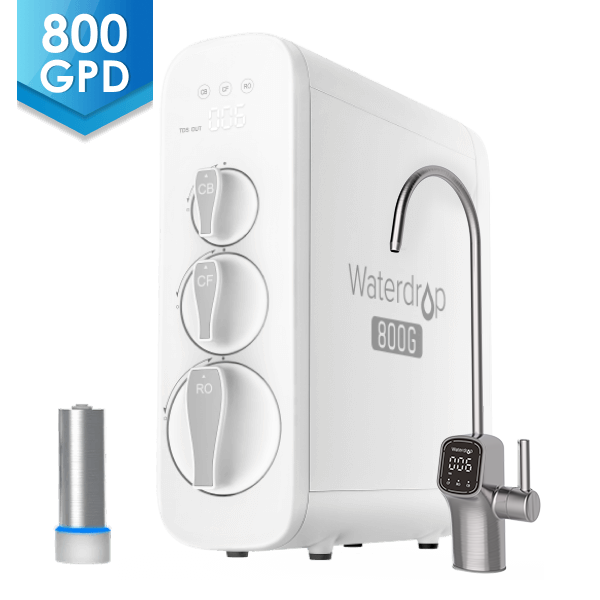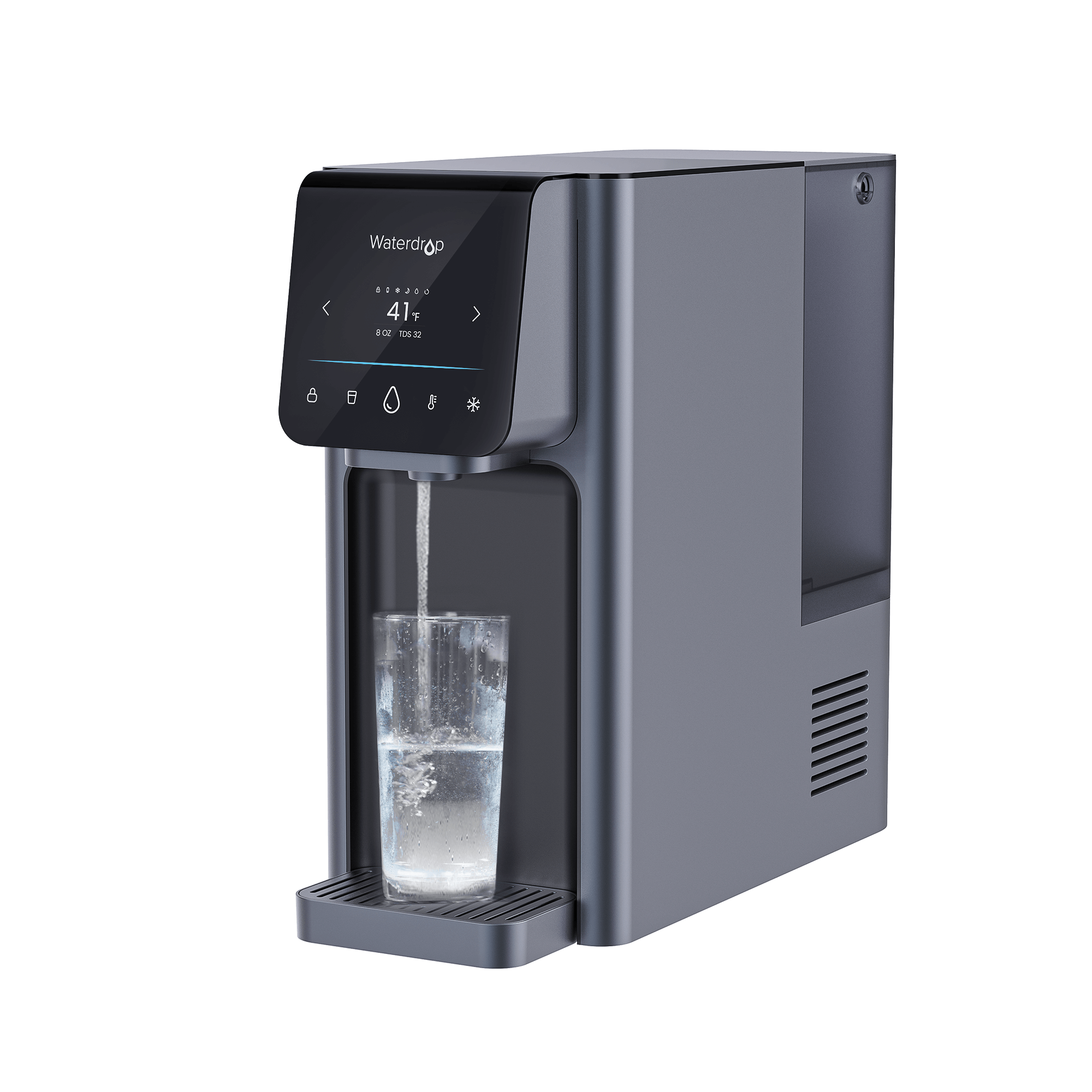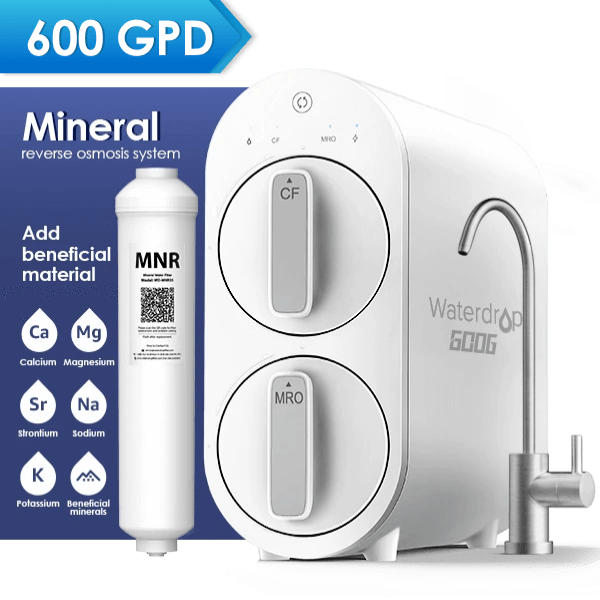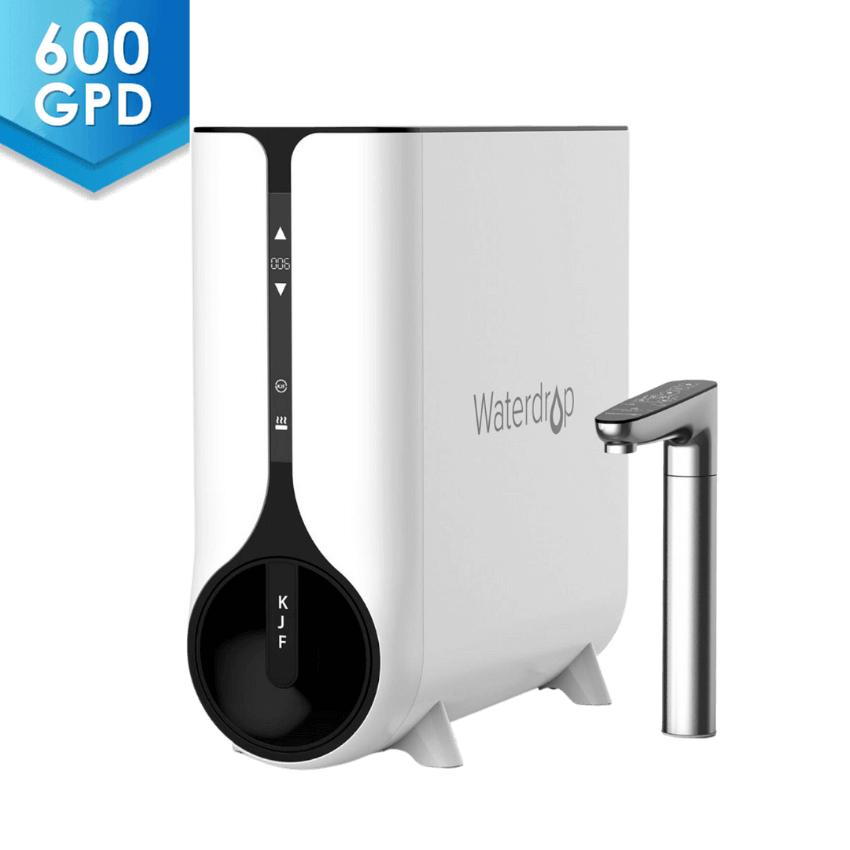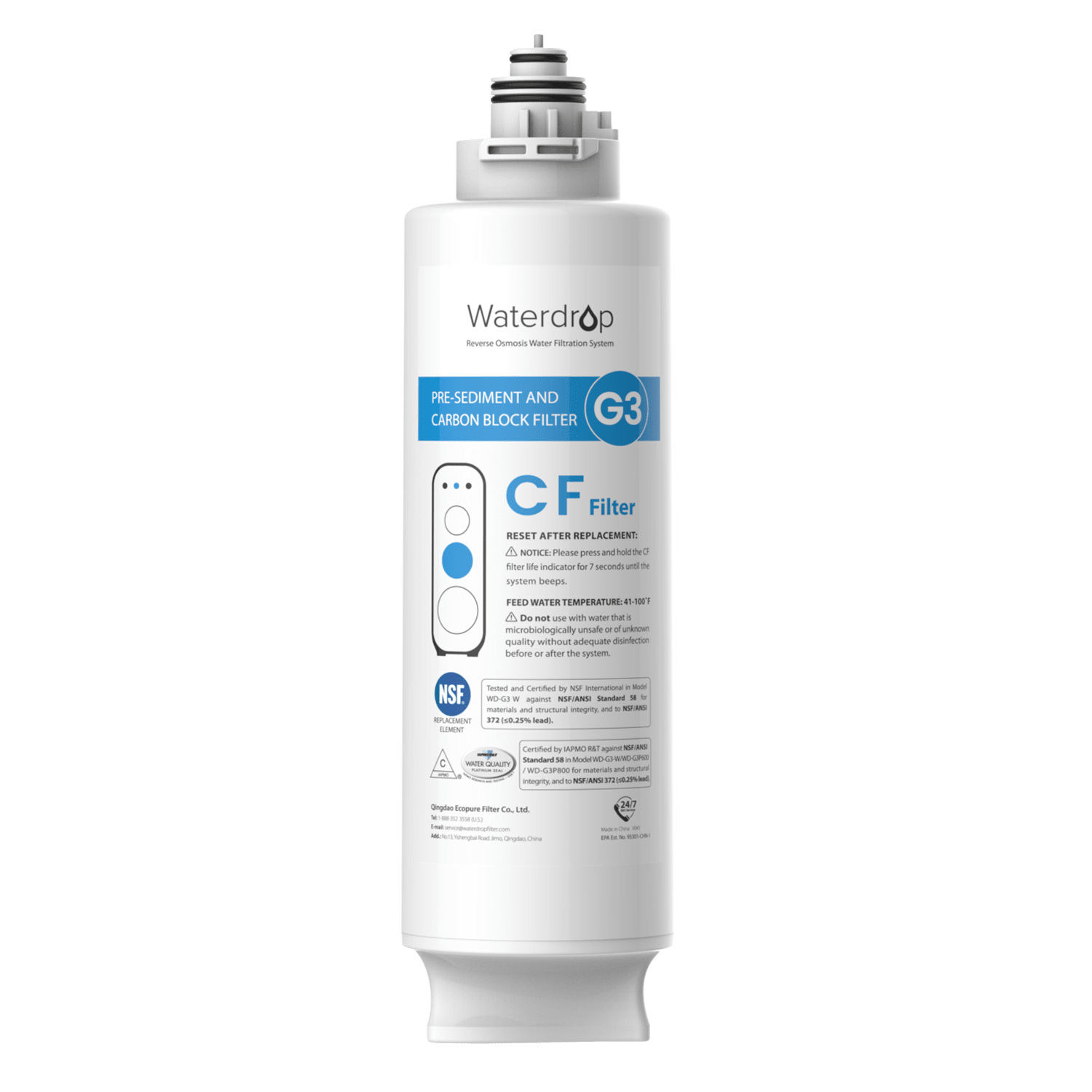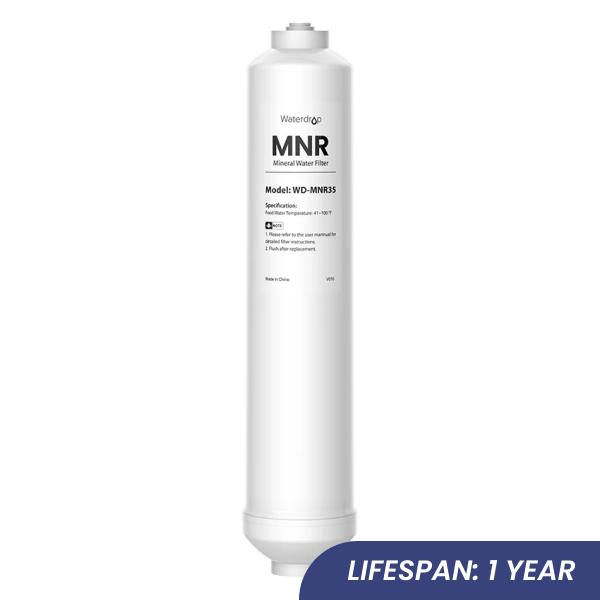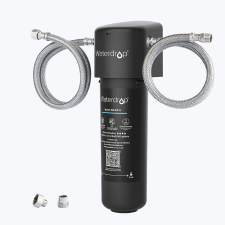How to Reduce Copper From Water?
by Dr. Jonathan Doyle - Updated February 17, 2025
Copper , a valuable and widely used metal in various industries, can sometimes make its way into our drinking water. While copper is essential in small amounts for human health, excessive exposure through drinking water can lead to serious health issues. If you're concerned about copper contamination in your water, this guide will explain how to reduce copper from water, focusing on the most effective solution.
What Is Copper?
Copper metal is a reddish-brown metal that occurs naturally in the Earth’s crust. It has been used by humans for thousands of years due to its exceptional conductivity and durability. This metal is often found in everyday items, including electrical wiring, plumbing pipes, and household appliances. Copper plays a crucial role in many industrial and technological applications, but when it enters drinking water, it can become a health concern.
What Is Copper Used for?
Copper is an essential component in many industries. Here’s a breakdown of what copper is used for.
- Plumbing: Copper pipes are a standard feature in plumbing systems due to their corrosion resistance and ease of installation.
- Electrical Systems: Copper is used for wiring and electrical components because of its excellent electrical conductivity.
- Industrial Machinery: Copper is also used in manufacturing machines, coins, and construction materials.
- Agricultural Chemicals: Copper-based pesticides and fungicides are frequently used in farming to prevent plant diseases.

Despite its many useful applications, the presence of copper in drinking water should not be overlooked, as it can be harmful at high concentrations.
Health Risks of Copper in Drinking Water
In low amounts, copper is essential for health, but high levels of drinking water can lead to serious health issues. Understanding the risks of copper contamination is important for protecting your health.
Short-Term Health Effects
The World Health Organization (WHO) has set 2mg/l as the health-based guideline value. Excessive copper in drinking water can lead to immediate health issues, such as:
- Gastrointestinal distress: Symptoms like nausea, vomiting, abdominal cramps, and diarrhea.
- Metallic taste: Water may develop a distinctive metallic taste due to the presence of copper metal.
Long-Term Health Effects
Prolonged exposure to high levels of copper can cause more severe health effects.
- Liver and Kidney Damage: Chronic exposure may damage organs, especially in children and those with liver diseases.
- Neurological Issues: In extreme cases, high copper concentrations can result in dizziness, headaches, and cognitive impairments.

How Does Copper Get into Drinking Water?
Copper can enter drinking water from various sources. Understanding these sources helps us identify the need for proper filtration methods to reduce copper from the water supply.
- Corrosion of Copper Pipes: The most common source of copper contamination is the corrosion of copper pipes in older buildings. As pipes degrade over time, copper ions leach into the water supply, particularly when water is acidic or has low mineral content.
- Agricultural Runoff: Copper-based agricultural chemicals used to control pests and fungi can wash into rivers and groundwater, contaminating nearby water supplies.
- Industrial Effluent: In areas with industrial activity, copper waste can seep into local water sources, contributing to contamination.
With these sources in mind, addressing copper contamination becomes critical for maintaining clean and safe drinking water.
Why Reverse Osmosis (RO) Is the Best Solution to Reduce Copper From Water?
There are several methods to reduce copper from water, but the reverse osmosis (RO) water filter system stands out as the most effective solution for purifying water from copper and other contaminants.

How Does Reverse Osmosis Work?
Reverse osmosis is a powerful water purification method that uses a semi-permeable membrane to filter out contaminants, including copper metal. Here's how the process works.
- Water is pushed through a membrane that allows only water molecules to pass through, blocking larger particles, including copper ions.
- The purified water is collected on the other side, while the copper and other contaminants are flushed out of the system.
This method is highly effective in reducing a wide range of contaminants, including heavy metals like copper.
Why Choose Reverse Osmosis?
Reverse osmosis offers several key advantages in reducing copper from drinking water.
- Highly Effective at Reducing Copper: Reverse osmosis systems are designed to reduce copper ions from water with high efficiency. If you're concerned about what copper is doing in your drinking water, RO can eliminate it effectively.
- Comprehensive Purification: RO filters not only reduce copper, but also a broad spectrum of other harmful substances such as chlorine, fluoride, pesticides, bacteria, and viruses.
- Minimal Maintenance: Modern RO systems require only periodic filter replacements, making them low-maintenance and cost-effective.
- Improved Water Taste: By reducing copper metal and other impurities, RO systems help improve the taste and odor of your drinking water.
- Long-Term Value: While initial costs may be higher, RO systems provide long-term value through their superior filtration performance and durability.

Comparison With Other Filtration Methods
While there are several ways to reduce copper from water, reverse osmosis stands out for its efficiency.
- Activated Carbon Filters: These filters are effective at reducing chlorine and some organic contaminants, but they do not reduce copper as efficiently as reverse osmosis.
- Distillation: Although distillation can reduce copper, it is slower and energy-intensive. It also doesn’t reduce other contaminants as effectively as RO.
- Ion Exchange: This method can reduce copper ions but is less efficient and requires regular maintenance to remain effective.
In contrast, reverse osmosis systems are designed for comprehensive, long-term water purification, making them the best choice for reducing copper.
How to Choose the Right Reverse Osmosis System?
When selecting a reverse osmosis water filtration system to reduce copper from your water, consider the following factors.
- Filtration Capacity: Ensure the system is capable of handling your household’s water needs. Some systems are designed for smaller households, while others are built to accommodate larger families.
- Filter Quality: Choose a system with high-quality filters that effectively reduce copper metal and other contaminants from water.
- Ease of Maintenance: Look for systems that are easy to install and maintain, with clear instructions for filter replacement and system cleaning.
- Water Waste Ratio: Some RO systems waste a significant amount of water during the filtration process. Choose a model that provides a better water-to-waste ratio to save water in the long run.
- Certifications: Make sure the RO system is certified by organizations like NSF International to guarantee its effectiveness at reducing copper and other pollutants.

Conclusion
Excessive copper in drinking water is a serious concern, but reverse osmosis systems offer an efficient and reliable solution for reducing copper metal and other harmful contaminants. Whether your water contamination comes from corrosion of copper pipes, agricultural runoff, or industrial discharge, RO systems provide the most effective way to ensure your water is less free from copper and other pollutants.
By investing in a high-quality reverse osmosis system, you can enjoy clean, purified water, ensuring better health and peace of mind for you and your family.
Thank You for Subscribing!
A 10% discount code has been sent to your email, and you also have a chance to win a new K19-H Countertop RO System. We will notify the winners via email.
Contaminants Detected in Fruitland Water Special Service District
30
Contaminants
EXCEED EWG HEALTH GUIDELINES
EXCEED EWG HEALTH GUIDELINES
30 Total Contaminants in Your Water
Water Provider
Fruitland Water Special Service DistrictPopulation Affected
120,000Water Source
Ground waterExceeds Guidelines
Others Detected


